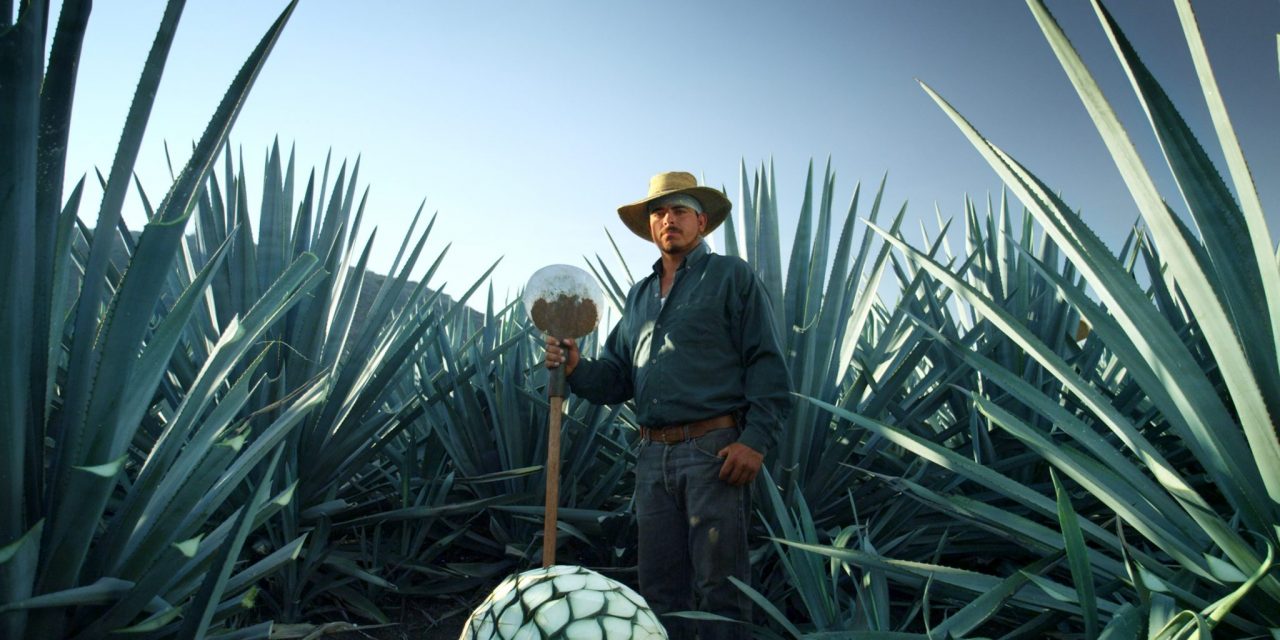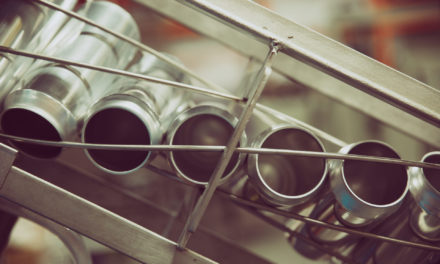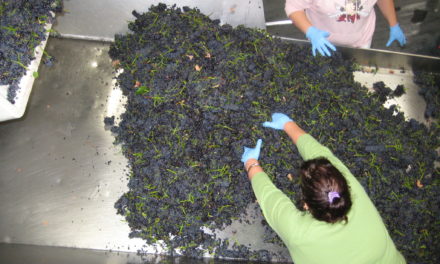
“The method requires more time, labor, and expense, but our goal isn’t to do it the faster or cheaper way.” —Antonio Rodriguez, Patrón Spirits International [Photo courtesy Patron Spirits international]
Founded in 1989 by John Paul DeJoria, Patrón has always been at the forefront of practicing and promoting environmental responsibility. At this point, the effects of this dedication have been realized worldwide. At the root of these efforts is how the tequila is made, which, at Patrón, is with an Old World process and model that requires hands-on precision every step of the way.
Patrón was originally distilled at Casa 7 Leguas, one of Mexico’s oldest distilleries, which was purchased by St. Maarten Spirits (DeJoria being a co-owner) in 1989. By 2002, the Patrón brand was producing close to 100,000 cases and needed its own facility. It established Hacienda Patrón in the highlands (Los Altos) of Mexico’s Jalisco region, where it now produces more than 2.5 million cases annually using its original production model for every single batch. This means as the company grows, it recreates its original distillery as needed—as of today, there are 12 scale models of its original facility under the same roof, with more on the way. “They’re all replicas of the same model,” says Antonio Rodriguez, director of production. “It’s the same size and process each time.”
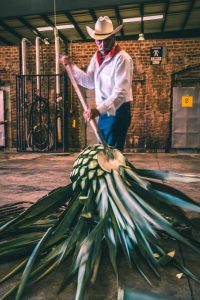
[Photo courtesy Patrón Spirits International]
All Patrón tequila is made from 100 percent pure Weber blue agave sourced from families who’ve been growing it for generations. The company has chosen to source its agave rather than grow its own, so it isn’t dependent on less-than-optimal seasons or crops.
Skilled jimadors use a coa—a sharp, specialized tool that’s a machete-like, rounded knife—to strip away the leaves and get to the heart of the plant, called the piña (yes, that means pineapple; the piñas have a similar look). Once harvested, piñas are slow-baked in brick ovens for more than three days to ensure they’re evenly cooked. “The goal is to develop the sweetness of the agave so the yeast can do its job,” says Rodriguez, noting that this method is better for the smooth, distinctive flavor profile the company seeks. When baking is complete, the agave is placed in a circular stone pit, where it’s slowly crushed by a two-ton, volcanic wheel, called a tahona, which extracts the agave juice and fiber.
“We do it this way to add complexity to the tequila,” says Rodriguez. “There are less than 20 of these stones in the industry. Patrón has 10 of them. The method requires more time, labor, and expense, but our goal isn’t to do it the faster or cheaper way.”
The juice and fiber are fermented for two days using the company’s in-house yeast, followed by distillation. “We use copper stills to create a smoother outcome,” says Rodriguez. “Each tequila is distilled at least twice, and it takes a few hours for each distillation. For silver tequila, the entire process takes about seven days.” Others are aged anywhere from two months to three years in Hungarian, American, or Burgundian oak, depending on the type of tequila.
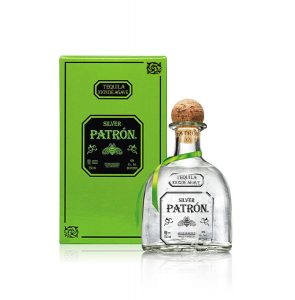 Patrón at the bar
Patrón at the bar
Patrón crafts a wide range of tequilas, the most widely produced being Patrón Silver, a smooth, elegant offering that’s ideal for cocktails yet equally enjoyable on its own. “I like to use the Patrón blanco when I prepare our signature margarita, made with fresh lime, orange and lemon juice, and agave nectar. To add a twist, I float it with a blood orange and serrano pepper infusion,” says Guadalupe Barragan, owner of Casa Chapala Mexican Grill and Catering in Austin, Tex., which is well known for both Barragan’s gracious hospitality and its outstanding selection of tequilas (there are about 200 in stock). “I tend to use only the blanco tequila for my cocktails. I prefer crafted tequila neat, with an ice cold Topo Chico [sparkling water] on the side.”
Barragan says his favorite offering from the company is Roca Patrón. “The flavor profile is unique and very smooth, definitely a sipping tequila to be enjoyed in celebration of life’s special moments,” he says. Roca Patrón Añejo is aged in barrels for 14 months to achieve a perfect balance for sipping, complete with a rich, amber color and full-bodied aromas and flavors of oak, vanilla, and a hint of smoke.
“I visited their grounds last year and was impressed with the sustainability efforts they have in place,” adds Barragan. “They’re not only growing their brand, but they’re providing opportunities for the community and the artisan people involved in the process to prosper and to connect with the world.”
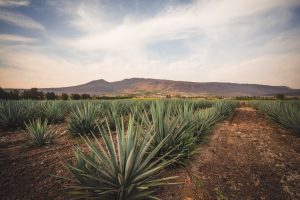
[Photo courtesy Patrón Spirits International]
Sustainability Practices
Barragan is right on the mark when it comes to embracing Patrón’s sustainability efforts, which span from harvest to shipment. While the facility has its own deep well that supplies naturally soft water (a key factor in choosing the site), tequila production still creates a significant amount of leftover distillate, also referred to as “stillage.” Rather than discard it, the company developed a reverse-osmosis system that reclaims between 60 percent and 70 percent of the wastewater for reuse in its cooling towers as well as for cleaning.
The remaining stillage is combined with unused agave fibers (bagasse) to create compost. The company also treats agave fibers from other distilleries at no charge. “We welcome anyone who wants to deal with their distillery waste,” says Rodriguez. If the bagasse were left untreated, the concentrated, decomposed waste could eventually make its way into waterways and contaminate them, potentially killing fish and plant life. Instead, the resulting compost is used to grow crops in the Hacienda’s organic vegetable garden, which provides food for employees and visitors; any excess is given to employees to take home. The compost is also given back to the agave producers to fertilize their crops, as well as to recreational fields and other gardens and land areas in town. (The hacienda garden was originally used as a model to show agave farmers, who were skeptical about the idea, that the compost was safe for consumable crops.)
“We continue to improve our practices,” says Rodriguez. “Last year, we reduced solid waste by 70 percent—everything is recycled or put into the compost. There are 1,700 people here; it’s basically a small town that’s producing the tequila. There are machines we could use to automate things, but we’re using Old World methods both for quality and to create more jobs in the area.”
When shipped, all items for on-premise use are sent without individual packaging to further reduce waste. Other sustainable measures include using acoustic screens around the cooling towers to reduce and contain noise, as well as adding a natural gas pipeline to reduce air emissions. A company-sponsored transportation system brings employees to and from the distillery. “Most employees live nearby,” says Rodriguez. “We’re the largest employer in the region.”
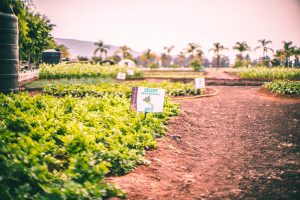
Hacienda garden [Photo courtesy Patrón Spirits International]
Because of its efforts, Mexico’s National Water Commission (CONAGUA) and the Jalisco state environmental agency (SEMADET) have recognized Patrón as a leader in efforts to help the country’s environment. It also earned ISO 14001 certification and the Clean Industry Certification from the Mexican Federal Environmental Protection office (PROFEPA). This has inspired other producers in the area to improve their own environmental efforts. “Other distilleries are applying our practices so they can improve their performance,” says Rodriguez with pride. “They use us as an example.”
Beyond its facility, Patrón supports environmental fundraising events and organizations worldwide, including the Waterkeeper Alliance, an international association of clean water advocates. It also supports charities and organizations around the globe that are focusing on eliminating hunger, curing disease, rebuilding communities and helping the less fortunate. The company is also actively involved in civic and charitable causes in Jalisco, including support for orphanages, senior housing, and food banks.
Creating a Balance
As of this year, Patrón is reaching a balance between sales and production in the facility, yet more demand coming from the United States and beyond requires expansion. “We’re starting with 20 percent expansion,” says Rodriguez, “but we have the space for 100 percent. And we’ll do it all the same way, by replicating the small model we started with as volume is needed.”
Ultimately, that means more jobs and happy employees: “Patrón is taking extra steps to produce the best tequila it can,” says Rodriguez. “People can tell when something is well-made. A big part of that can be credited to the people making it.”

